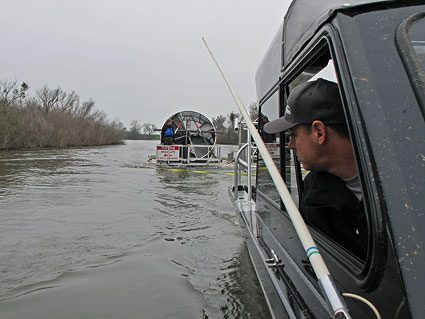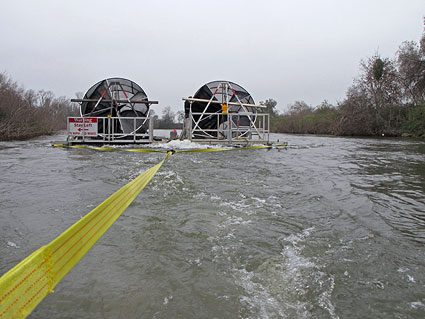Wednesday January 12, 2011

Now that the adult fall-run Chinook spawning has come to an end it is time to install rotary screw traps for monitoring the outmigrating juveniles. In general, it can be difficult to get a good estimate of the number of outmigrants due to their small size (25 – 120 mm total length), but this can be especially challenging in years when the water levels are high and the river is wide and deep.
On this cold foggy morning we were installing two rotary screw traps in tandem near the confluence of the Tuolumne River in Central California. A rotary screw trap is one of the most common tools used to catch outmigrating salmonids on the West Coast of the U.S. and consists of a funnel shaped cone suspended between two pontoons. Baffles in the cone cause the cone to rotate as water flows past the trap. As the trap cone rotates, fish that enter the cone are guided into a livebox that is attached to the rear of the trap.

With all the precipitation we have received early this winter, water operators have begun releasing water to make additional room in reservoirs for runoff and many of the Central Valley rivers are flowing higher than usual. The increased flow requires a little ingenuity in positioning the traps where they will be most effective. Screw traps can usually be secured with an overhead cable spanning the width of the river but that is not possible under the current flow conditions. For this installation we set two large anchors just upstream of where we wanted to position the traps.

Using one of our larger boats the traps were towed into position and leader cables from the anchors were attached to the corners of the pontoons. Fortunately, we don’t mind working in unusual situations.
To receive regular updates of the trap counts, fish lengths and river conditions sign-up for our newsletter.
Photo source: FISHBIO
